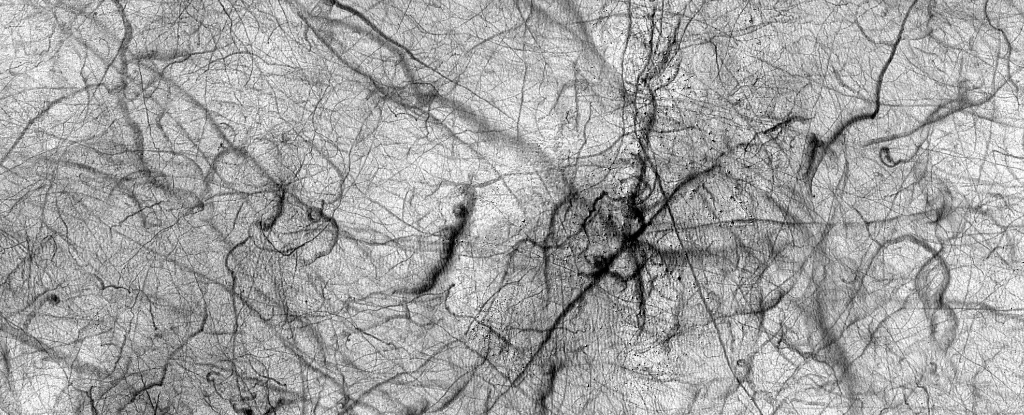Recent advancements in space technology have allowed scientists to capture astonishing visuals of Martian weather phenomena, particularly dust devils. An extraordinary image taken by the High-Resolution Imaging Science Experiment (HiRISE) camera aboard NASA’s Mars Reconnaissance Orbiter in September 2022 showcases these swirling vortices at their best. This capture focuses on the Haldane Crater, where the swirling dust devils have intricately sculpted the Martian landscape. This image not only serves as an aesthetic marvel but also as an essential tool for scientists who are eager to decode the atmospheric intricacies of the Red Planet.
The activity of these dust devils—temporary spirals of dust and air akin to tornadoes on Earth—provides invaluable insight into Mars’ atmospheric phenomena. Just as meteorologists on Earth study tornado patterns, researchers on Mars analyze the formation and movement of these whirlwinds to comprehend the atmospheric dynamics over time. Understanding how dust accumulates on the Martian surface and the effects of these dust devils could lead to vital insights into past climatic conditions and their influence on potential life-forms during a wetter Martian history.
Mars, classically depicted as the fourth planet from the Sun, garners attention not just for its distinct reddish hue—which is due to iron oxide in its soil—but also for its impressively diverse geological features. From colossal volcanoes like Olympus Mons, which stands as the tallest volcano in the solar system, to the vast canyon system of Valles Marineris, the planet teems with geological history that narrates its transition from a potentially habitable environment to the cold and arid world we see today.
The average temperature on Mars lingers around -60 °C, a reflection of its thin atmosphere, which is primarily composed of carbon dioxide (about 95%). In stark contrast to Earth, the Martian atmosphere is about 1% as dense, rendering it unsuitable for humans without advanced life-support systems. Nevertheless, the thin atmosphere is not static; it exhibits a remarkable dynamism that leads to various weather phenomena, including the ever-captivating dust devils that inhabit this alien world.
Mars’s dust devils embody a dual personality, acting as both an ally and an adversary in the ecosystem of planetary machines. Typically formed when the sun heats the planet’s surface—causing warm air to rise rapidly—these dust devils can vary in size from harmless twirling columns to massive spirals extending kilometers across the landscape.
On the one hand, dust devils assist in redistributing dust particles across the Martian surface which is crucial for understanding the ongoing weather patterns and Martian climate. On the other hand, they pose unique challenges for spacecraft and instruments deployed on the Martian surface. The significance of such phenomena cannot be understated, particularly for solar-powered missions where visibility on solar panels can directly affect energy production. When dust accumulates, it may hamper efficiency; however, a powerful dust devil can also serve as a natural cleaning mechanism, effectively washing away this build-up and restoring functionality.
The latest visuals and ongoing studies of Martian dust devils position them as fundamental subjects of research in planetary science. By analyzing their tracks, scientists aim to determine the deposition rate of dust over time, creating a clearer picture of how Mars’ climate evolved and how it continues to change. This knowledge is paramount as space agencies prepare for future missions and potential human exploration of Mars, as dust-related phenomena could have far-reaching implications for technology and human activities on the planet.
By unraveling the enigma of Mars’ dust devils, scientists inch closer to piecing together the broader atmospheric puzzle that defines the Red Planet. In understanding these dynamic systems, they also glean insights into the potential for past biological activity, shifting climatic backgrounds, and the ongoing quest for sustainable exploration. Thus, the swirling dust devils of Mars are not just a captivating spectacle; they symbolize the intersection of scientific inquiry and our innate curiosity about life beyond Earth.

Leave a Reply